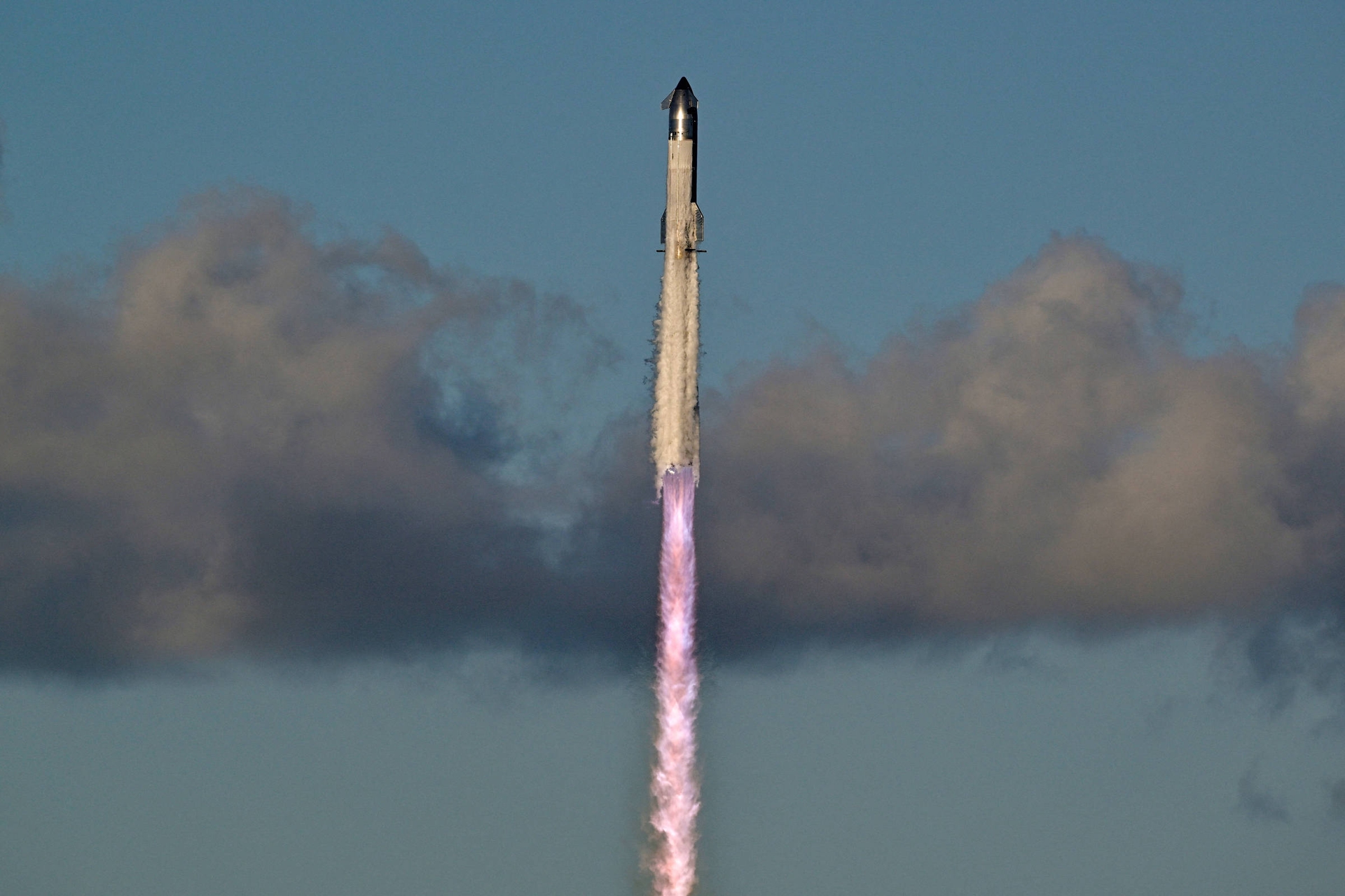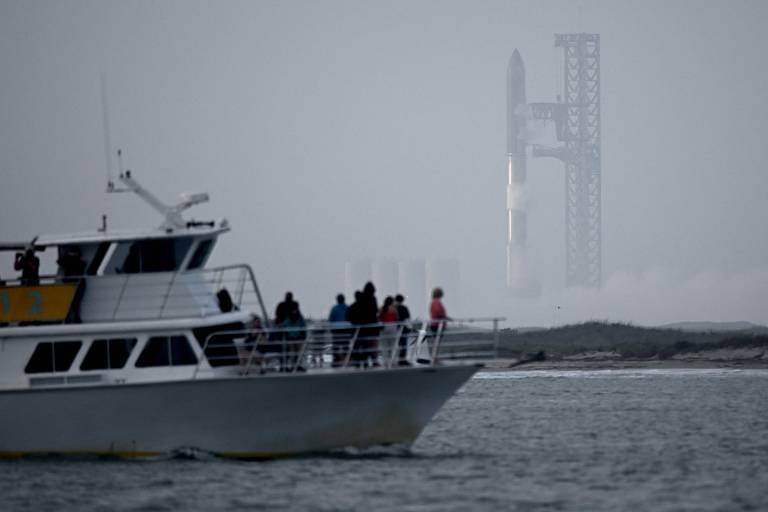Starship's second flawless flight opens new phase in the program

The 11th integrated flight of SpaceX 's Starship rocket was successfully carried out this Monday (13), marking an important milestone in the development of the largest and most powerful launcher in history.
It was the second fully successful test of the second version of Starship , after a series of failures that caused embarrassment and delays for SpaceX in 2025.
The launch took place at the beginning of the window of opportunity, at 8:23 pm (Brasília time, two hours less than in Starbase, Texas, where the departure took place), and in just over six minutes the second stage (the Starship itself) had completed its propulsive burn and placed itself on the desired trajectory, a suborbital path that would take it to re-enter the atmosphere over the Indian Ocean and plunge into it, in a gentle descent, just over an hour later.
The first stage (known as Super Heavy) completed its second flight, having previously been used and recovered on the eighth test mission. Of the 33 first stage engines that flew on that occasion, 24 were retained and another 9 had to be replaced—showing that there are still challenges to be overcome to achieve the rapid and complete reusability desired by the company.
This time, SpaceX opted not to attempt to return the first stage to the pad, instead using it to test a landing maneuver that will be applied to the next version of the vehicle. The process went exactly as expected, with the Super Heavy splashing down in the Gulf of Mexico.
As for the second stage, it repeated the previous mission, carrying out release tests of Starlink satellite simulators, in addition to firing one of the engines – an essential procedure for future truly orbital missions.
Reentry also represented important tests for the vehicle, which saw changes implemented to its heat shield—arguably the most challenging technology SpaceX has yet to develop to make Starship a practical reusable vehicle. Upon re-entry, the shield is enveloped in plasma and subjected to temperatures exceeding 1,500 degrees Celsius.
The success paves the way for the third version of Starship, with further upgrades, more engines, and larger propellant tanks, to begin its flight test program. Several of these are already under construction, and Elon Musk 's company expects to have the first flight of Starship 3 by the end of the year.
Next year, the plan is to demonstrate second stage recovery (something that has not yet been done) and in-orbit refueling – a procedure essential to NASA 's ambitions to use Starship in its Artemis program to transport astronauts to the surface of the Moon .
Strictly speaking, the first manned mission to land a moon would be Artemis 3, scheduled for 2027 , but during the launch broadcast on Monday, SpaceX implicitly dropped that date – something that was already widely speculated – by saying that it will begin commercial transportation of cargo (and not crew) to the surface of the Moon in 2028. The company also intends to offer the same service, but to Mars , starting in 2030.
All of this, however, depends on the smooth running of the next stages of the test program. It's worth remembering that the company had a difficult year, with numerous failures in a row, precisely during the transition between the first and second versions of Starship. Who knows what surprises await engineers when they jump to the third.
The U.S. government openly declares itself in a race against China for the first manned lunar landing of the 21st century . The Artemis 2 mission, scheduled to fly next year, will take humans to the lunar vicinity for the first time since 1972, but there will be no landing. Meanwhile, the Chinese space program continues developing vehicles similar to those used in the former Apollo program, aiming to make its first lunar landing with astronauts before 2030.
In addition to SpaceX, Jeff Bezos 's company Blue Origin is also contracted to provide future modules for manned landings, starting with Artemis 5, but there are internal studies to try to improvise a module originally made for cargo, the Blue Origin Mark 1, in order to carry astronauts and beat the Chinese in the race to the Moon.
uol






